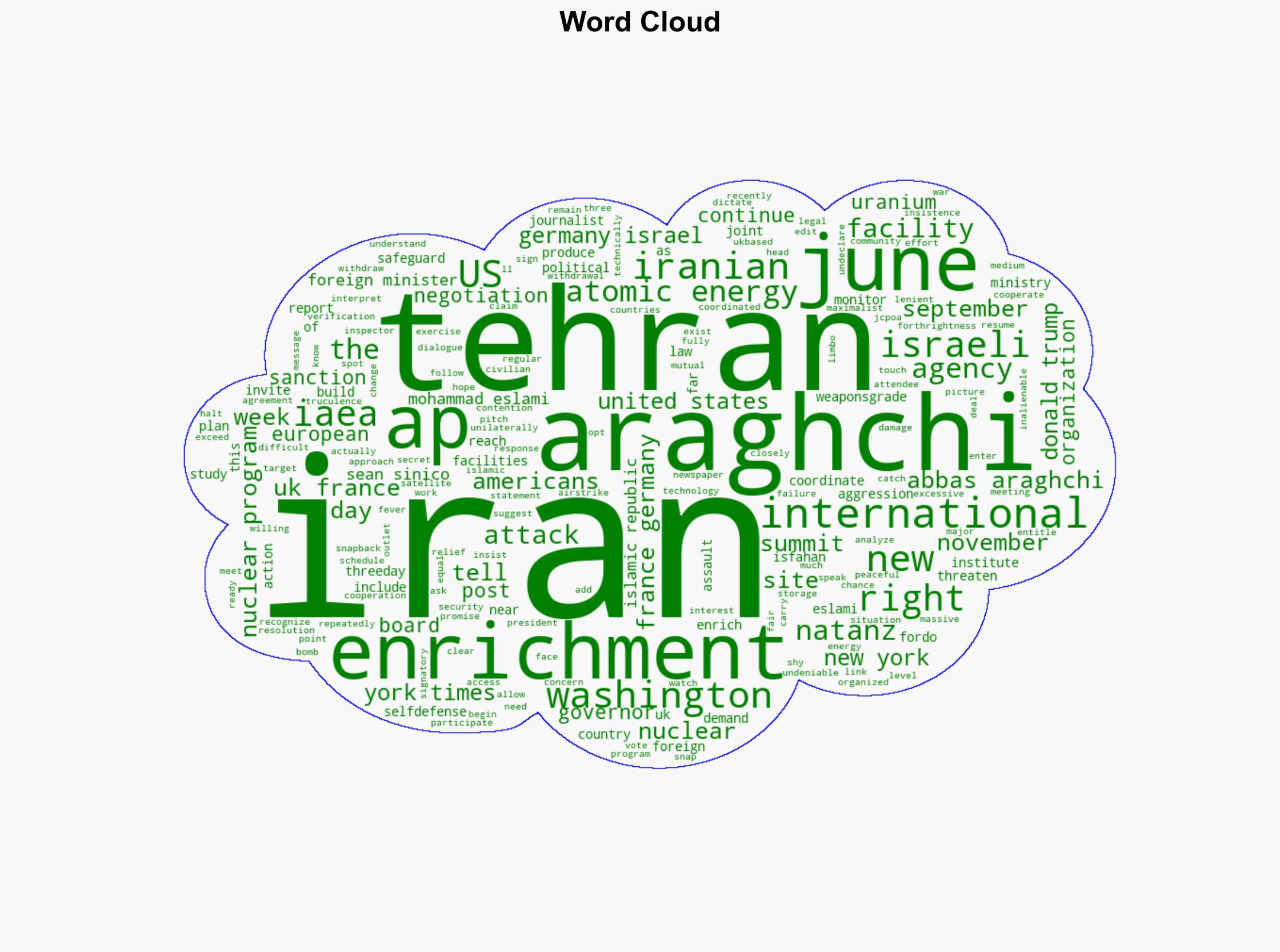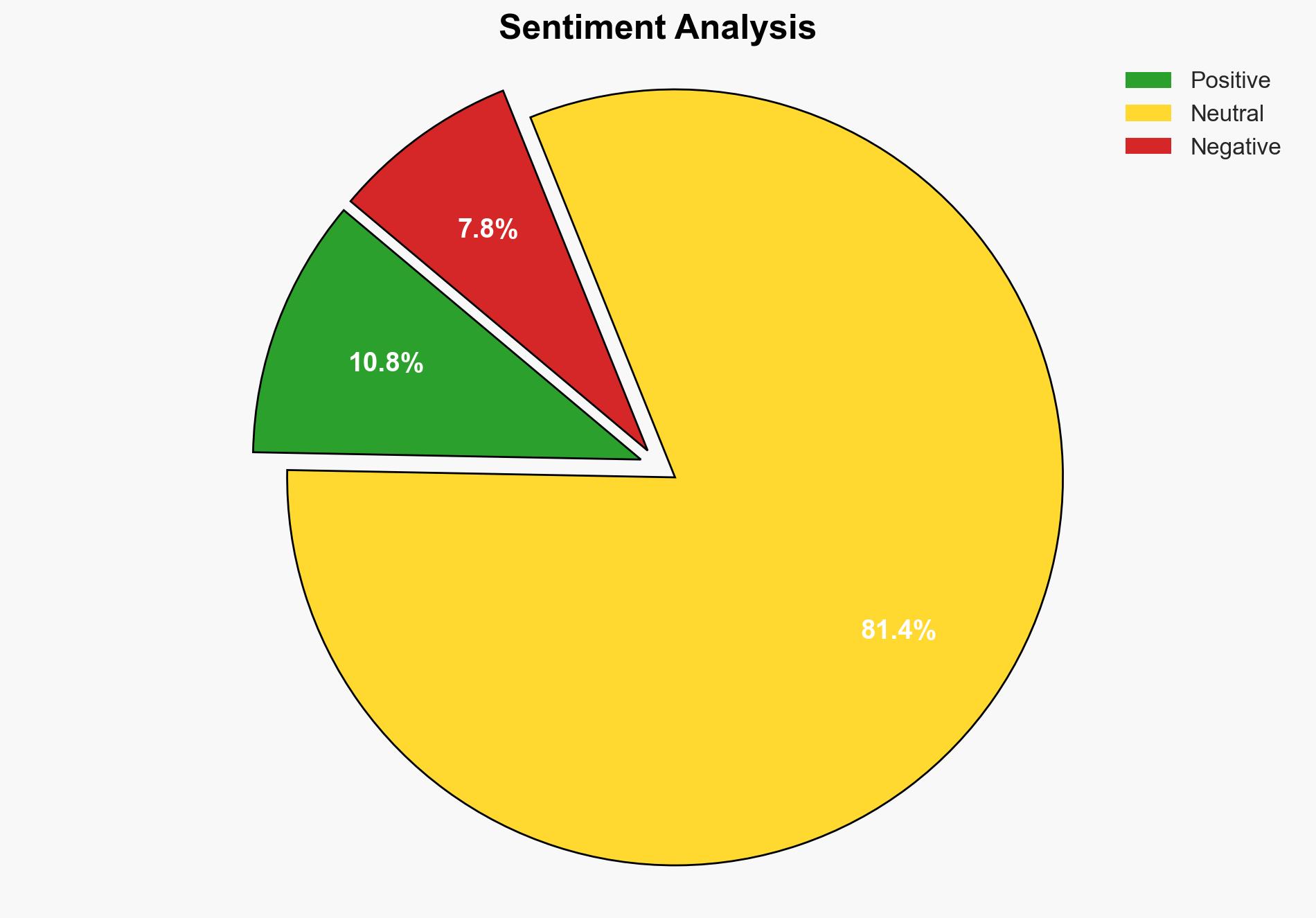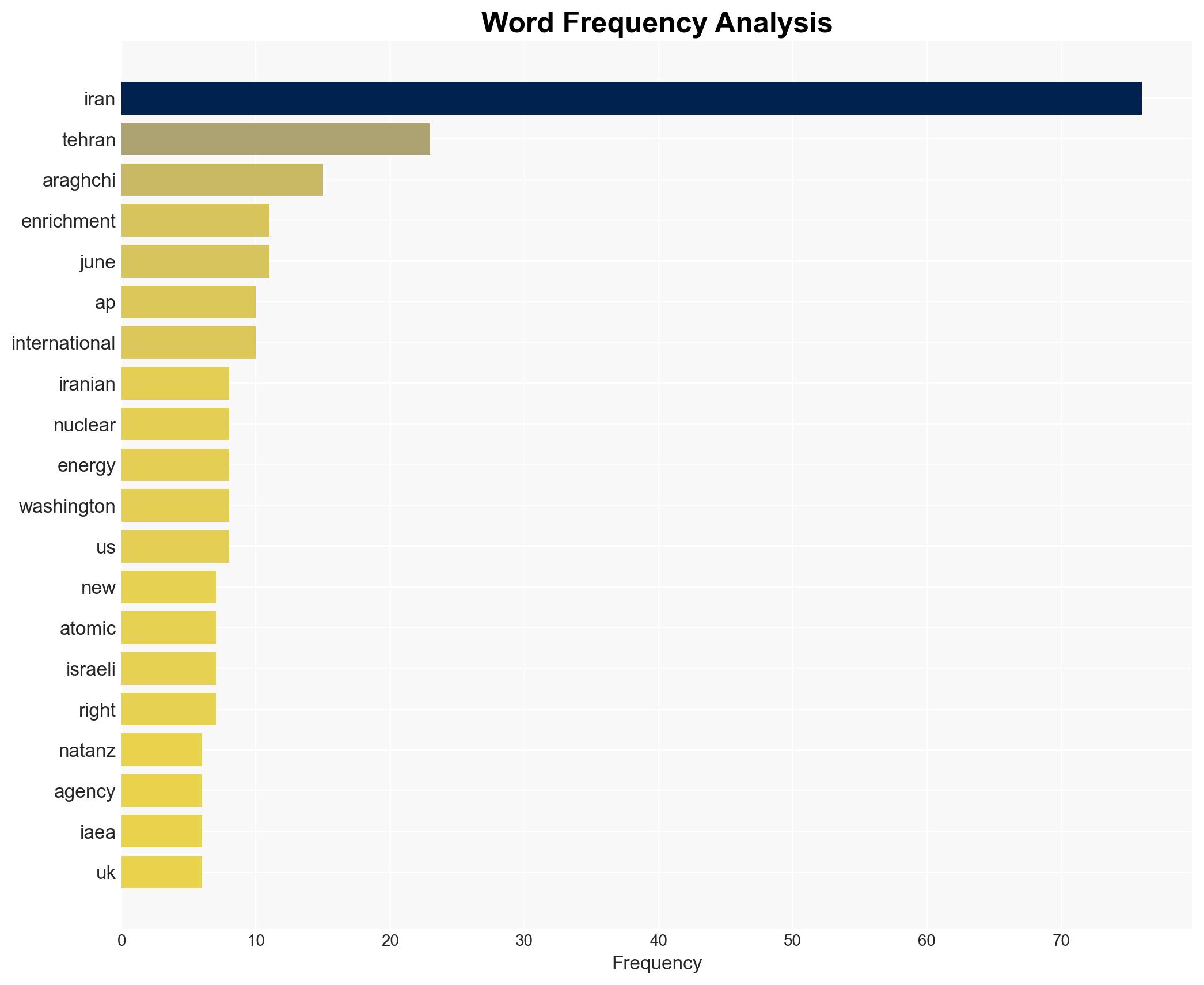Iran’s foreign minister says Tehran not enriching uranium – DW (English)
Published on: 2025-11-16
AI-powered OSINT brief from verified open sources. Automated NLP signal extraction with human verification. See our Methodology and Why WorldWideWatchers.
Intelligence Report:
1. BLUF (Bottom Line Up Front)
With a moderate confidence level, the most supported hypothesis is that Iran is strategically posturing to negotiate from a position of strength while maintaining its nuclear capabilities at a level that avoids direct conflict. Recommended action includes diplomatic engagement with Iran to clarify its intentions and reinforce international monitoring mechanisms.
2. Competing Hypotheses
Hypothesis 1: Iran is genuinely not enriching uranium beyond declared levels and is open to resuming negotiations on its nuclear program. This is supported by Iran’s public statements and the invitation to journalists to visit their facilities, suggesting transparency.
Hypothesis 2: Iran is covertly advancing its nuclear enrichment capabilities while publicly denying such activities to buy time and leverage in negotiations. Reports of new facility construction near Natanz and past instances of undeclared activities support this hypothesis.
Hypothesis 2 is more likely given Iran’s historical pattern of obfuscation and strategic ambiguity in its nuclear program, coupled with recent intelligence reports of facility construction.
3. Key Assumptions and Red Flags
Assumptions: Iran’s statements are taken at face value; international monitoring is assumed effective. There is an assumption that Iran’s strategic goals remain unchanged.
Red Flags: Reports of new facility construction, historical precedent of undeclared activities, and Iran’s strategic rhetoric. Potential deception indicators include Iran’s simultaneous claims of transparency and reports of facility expansion.
4. Implications and Strategic Risks
Continued ambiguity in Iran’s nuclear activities could lead to regional escalation, particularly with Israel, which perceives a direct threat. Political tensions could rise, affecting international negotiations and potentially leading to economic sanctions or cyber operations targeting Iranian infrastructure. The risk of miscalculation or preemptive strikes increases if Iran’s intentions remain unclear.
5. Recommendations and Outlook
- Engage in diplomatic dialogue with Iran to clarify its nuclear intentions and reinforce the role of the IAEA in monitoring activities.
- Enhance intelligence-sharing among allies to maintain situational awareness and prepare for potential escalation.
- Best-case scenario: Iran agrees to enhanced monitoring and resumes negotiations, reducing regional tensions.
- Worst-case scenario: Iran advances its nuclear capabilities, prompting military responses from regional actors.
- Most-likely scenario: Continued strategic ambiguity with periodic diplomatic engagements and incremental advancements in Iran’s nuclear capabilities.
6. Key Individuals and Entities
Abbas Araghchi (Iranian Foreign Minister), Mohammad Eslami (Head of the Atomic Energy Organization of Iran), International Atomic Energy Agency (IAEA).
7. Thematic Tags
Regional Focus, Middle East, Nuclear Proliferation, International Relations, Strategic Negotiations
Structured Analytic Techniques Applied
- Causal Layered Analysis (CLA): Analyze events across surface happenings, systems, worldviews, and myths.
- Cross-Impact Simulation: Model ripple effects across neighboring states, conflicts, or economic dependencies.
- Scenario Generation: Explore divergent futures under varying assumptions to identify plausible paths.
Explore more:
Regional Focus Briefs ·
Daily Summary ·
Support us
·





